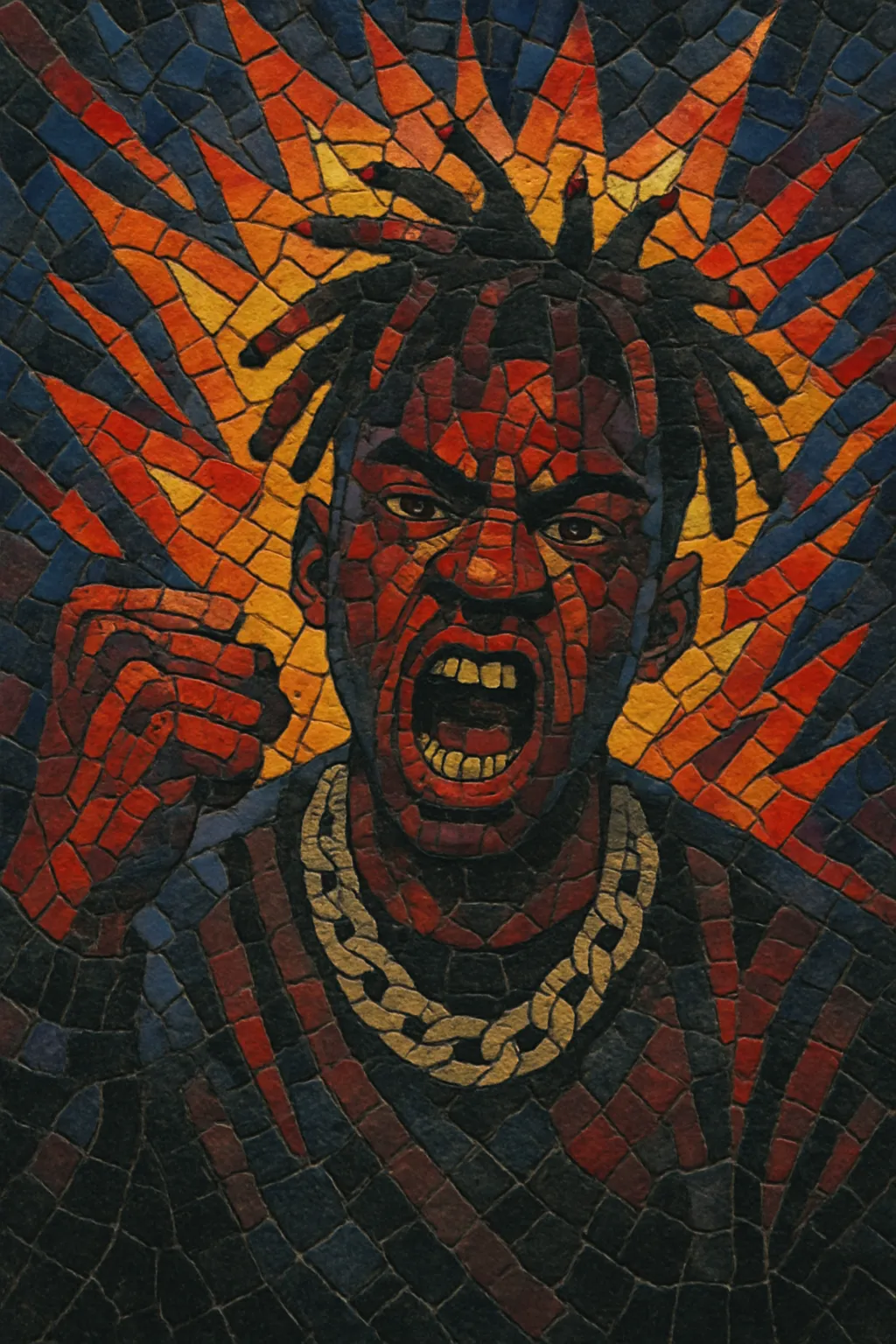Rage rap is a high-energy, synth-forward strain of contemporary trap characterized by distorted 808s, fast rolling hi‑hats, and bright, detuned supersaw or arpeggiated lead lines borrowed from EDM. The beats are usually minimal in harmony but maximal in timbre, building intensity with looping motifs, risers, and dramatic filter sweeps.
Vocals tend to be shouted or projective rather than whispered, with catchy, repetitive hooks and ad‑lib heavy delivery. Lyrical themes often center on flexing, hedonism, designer fashion, and internet-native lifestyle signifiers. Typical tempos land in the 130–150 BPM range, favoring short, loop-driven structures that explode quickly and end before the energy dips, making the style highly viral and performance-ready.
Rage rap traces roots to the airy, minimal plugg sound popularized on SoundCloud and the spacious, synth-led trap aesthetics of producers like Pi'erre Bourne. These textures primed audiences for brighter, more aggressive synth leads and hyper-energetic drums.
Playboi Carti’s 2020 album “Whole Lotta Red” normalized punk-like aggression, blown-out 808s, and stark, synthetic palettes. In 2021, Trippie Redd’s hit “Miss The Rage” (with its iconic supersaw lead) crystallized the “rage” moniker and sound. Around the same time, collectives and producers such as Working on Dying (notably F1lthy), Loesoe, and Outtatown pushed looping, EDM‑style synth hooks over trap frameworks.
Between 2021–2023 the sound became a dominant wave on TikTok and streaming platforms. Artists like Yeat, Ken Carson, Destroy Lonely, SoFaygo, and Homixide Gang fused fashion-forward aesthetics with explosive live delivery, solidifying “rage” as both a sonic and cultural identity within the post‑SoundCloud ecosystem.
Rage rap’s supersaw leads, hammered triplet rolls, and aggressive vocal mixes spread into adjacent internet micro‑genres and hybrid forms, influencing producers who graft its synth language onto drill, digicore, and experimental trap offshoots. Its short, loop-driven format continues to adapt for viral clips and high-impact performances.


